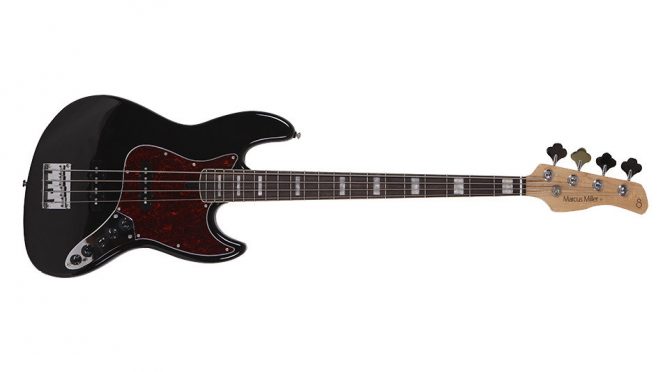Sire Marcus Miller V7 Vintage Fretless – Bass Practice Diary – 15th September 2020
I’ve been wanting to feature my Sire V7 Vintage fretless bass in a video for a while. I’ve featured Sire basses in my videos before, but never this one. And this is probably my favourite of all of the Sire Marcus Miller basses I’ve played. This is the only Sire bass that I’ve played that I didn’t need to do any setting up when it came out of the box. It played perfectly from the outset and the setup has remained very stable ever since.
Sire V7 vs V7 Vintage
So, what’s the difference between this Sire V7 Vintage and the regular V7’s that I featured in this video. This bass has a body made from Ash and the fretted V7’s both had Alder bodies. However, all of the V7 models come in both ash and alder versions. This bass has a maple fingerboard, my fretted V7’s have ebony fretboards, but once again, both models come with both options.
To find the differences between the models you have to look a bit more closely, and the differences are small. The position of the bridge pickup is different. It’s closer to the bridge on the Vintage model and further away on the standard V7’s. This does give the Vintage model a slightly tighter sound on the back pickup. The Vintage models have a gloss finish on the neck, the standard V7 neck has a really nice matt feel. I slightly prefer the matt feel of the standard V7 neck, but it doesn’t make much difference to me.
I think those are the important differences. There are cosmetic differences, like the scratch plate looks different and the bridge on the Vintage model has vintage style saddles. But I’m not interested in that stuff. I’m only interested in how it plays and how it sounds.
Why I like the Sire V7 Vintage Fretless
I said that this is probably my favourite Sire bass that I’ve played. The setup is really good, but honestly that’s probably just luck with this particular bass. Sire basses are set up with a low action, which can be great but it can also go wrong, and this particular one came out well.
So, that’s not the reason I like it. The reason I like it is because it gives me something that I never thought I’d have, for a very low price. I grew up listening to legendary bass players like Jaco Pastorius and Marcus Miller playing vintage Fender Jazz basses. But it’s never been my thing to try and recreate a vintage sound. I’ve always looked forward and tried to create a modern bass sound. Investing in a proper vintage Fender Jazz bass, even a reissue, would be very expensive. And it’s not an investment that I’m willing to make when it’s not the sound I’m aspiring to make.
This Sire bass gives me a vintage style passive J style fretless bass for a price that I can justify buying it and keeping it just to have fun with. Honestly, I hardly ever play the bass with the preamp switched on. Not because the preamp isn’t good (it’s really good). But because I just want it to be a vintage Fender Jazz Bass. The fact that it has this preamp on it, which makes it capable of functioning as a modern active fretless bass, is just a bonus. It really adds to the versatility of the instrument.
I’ve even kept the flat wound strings on it, and I never play flats on my fretless basses. To be honest, the bass has the wrong name on the headstock. I know that Marcus Miller is an under rated fretless player. But every time I pick up this bass I just end up playing Jaco lines for hours. I spent years learning Jaco’s catalogue and playing it on basses that sounded nothing like his bass. Now I have the right tool for the job and I love it.


